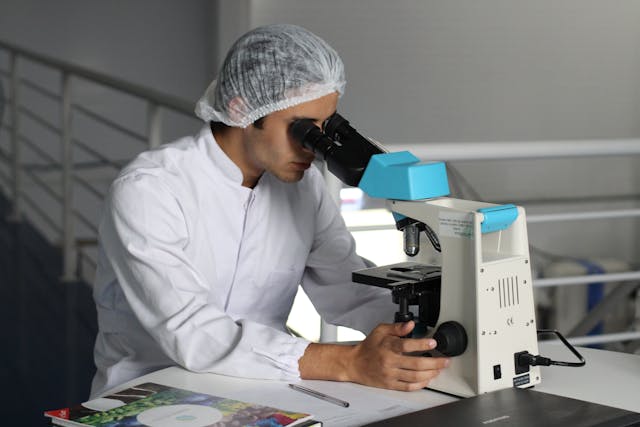A man in his early 60s tragically died from a rare bacterial infection after his dog licked an open wound in a case so concerning that medical authorities have issued a warning. The unnamed person, who was described by family as “fit as a fiddle,” saw a sharp deterioration in health before passing away from sepsis and multiorgan failure. This case emphasizes the significance of appropriate wound care and hygiene and serves as a sobering reminder of the possible risks connected to pet saliva.
The Rare Infection: How It Happens
Medical professionals think Capnocytophaga canimorsus, a bacterium frequently found in dog and cat saliva, may have been the cause of the infection, even though the precise bacterial strain that caused it has not been identified. Even though these bacterial infections are uncommon, they can be very dangerous, especially for people with compromised immune systems, long-term medical conditions, or open wounds.
Numerous bacteria, the majority of which are innocuous to humans, are found in dog saliva. However, certain bacteria can cause dangerous infections when they enter the bloodstream through an open wound. This man’s infection rapidly worsened, leading to septicemia, multiorgan failure, and eventually death.
What Is Capnocytophaga canimorsus?
Capnocytophaga canimorsus is a bacteria found in the mouths of healthy dogs and cats. It is typically harmless to pets but can pose a severe threat to humans if it enters the bloodstream. The bacteria can lead to a rapid systemic infection, often causing:
- Fever and chills
- Fatigue and muscle weakness
- Vomiting and diarrhea
- Confusion or difficulty thinking
- Rapid heart rate and low blood pressure
- Skin infections, which may turn necrotic
If not treated immediately, infections caused by Capnocytophaga can progress to sepsis, septic shock, and multiorgan failure.
Understanding Sepsis: The Silent Killer
Sepsis is a life-threatening condition that occurs when the body’s immune response to an infection spirals out of control, causing widespread inflammation and damage to tissues and organs. In this case, the bacterial infection triggered sepsis, leading to a cascade of severe complications. The key symptoms of sepsis include:
- High or abnormally low body temperature
- Rapid heart rate
- Difficulty breathing
- Extreme fatigue or confusion
- Clammy or sweaty skin
Without prompt treatment, sepsis can escalate to septic shock, a critical condition characterized by dangerously low blood pressure and organ failure.
The Coroner’s Warning: Pet Saliva and Wound Care
The coroner warned the public about the dangers of letting pets lick open wounds after this tragic case. The truth is that bacteria in a pet’s mouth can present major health risks, despite the widespread belief that pet saliva is harmless or even helpful for wound healing.
How to Properly Treat Wounds to Prevent Infection
To minimize the risk of infection, follow these steps:
- Clean the Wound Immediately: Wash the wound thoroughly with soap and warm water for at least 20 seconds.
- Apply an Antiseptic: Use hydrogen peroxide, iodine, or an antibacterial ointment to disinfect the area.
- Cover the Wound: Use a sterile bandage to protect the wound from exposure to bacteria.
- Avoid Letting Pets Lick the Wound: As comforting as it may seem, allowing pets to lick wounds increases the risk of infection.
- Monitor for Symptoms of Infection: Redness, swelling, warmth, pus, fever, or increased pain around the wound may indicate an infection that requires medical attention.
Who Is at Higher Risk?
Although bacterial infections from pet saliva are rare, certain individuals are more susceptible than others. Those at increased risk include:
- People with weakened immune systems (e.g., cancer patients, transplant recipients, individuals with autoimmune diseases)
- Elderly individuals
- People with diabetes
- Those with liver disease or excessive alcohol consumption
- Individuals who have had their spleen removed
If you fall into any of these categories, extra precautions should be taken to prevent infections.
Recognizing the Signs of a Dangerous Infection
Early intervention is key to preventing serious complications from bacterial infections. If you have been exposed to a potential bacterial source, such as a dog bite, lick, or scratch, and experience any of the following symptoms, seek medical attention immediately:
- Unexplained fever
- Red streaks extending from the wound
- Pus or drainage from the wound
- Persistent pain or swelling
- Dizziness or fainting
Prompt treatment with antibiotics can often stop the infection before it spreads and becomes life-threatening.
Conclusion: A Lesson in Vigilance
A sobering reminder of the significance of appropriate wound care and hygiene is provided by the tragic case of a man who died from a rare bacterial infection after his dog licked his wound. Despite the happiness and camaraderie that come with pet interactions, it is important to understand the possible risks related to bacteria in pet saliva.
The coroner’s warning emphasizes the importance of taking basic safety measures, like properly cleaning wounds, keeping pets from licking open wounds, and getting medical help if infection symptoms appear. We can continue to enjoy our pets’ company while safeguarding ourselves and our loved ones from avoidable health hazards by being watchful and knowledgeable.

